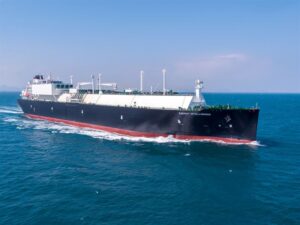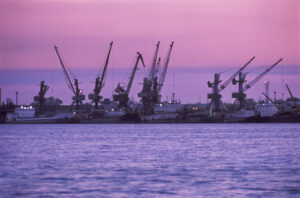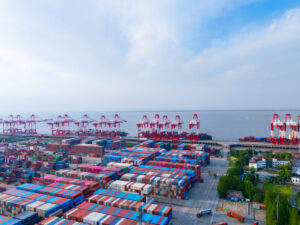Retrofitting terminals with automation and other technologies is widely recognised by the industry as a greater challenge than implementation of automation at greenfield sites.
Speaking to PTI ahead of the Container Terminal Automation Conference (CTAC) 2021, Carlos Barbera, VP Product Management, Navis, spoke about some of the key considerations terminals should be making and some of his predictions regarding the future of automation.
“In the case of brownfield terminal automation, minimising disruption to the existing business is normally one of the most important goals,” he said.
Because of this, it is key for brownfield terminals to consider that implementing process automation ahead of equipment automation can be an effective strategy to mitigate risk and minimise disruptions.
“Without operators driving the equipment, operational systems need to make more real-time decisions. These automated processes can also be implemented in manual operations which can ultimately speed up the readiness of the terminal to implement equipment automation at a later stage for a quicker return on investment,” he explained.
Barbera will be speaking at CTAC 2021! Click here to register for the conference.
Meanwhile, greenfield terminals can take a different approach and should consider what level of innovation is adequate for its project.
“Implementing a terminal design and systems architecture that has been done before will accelerate the ramp-up of the terminal and will produce a return on investment much faster. Higher levels of innovation will create more risk, requiring more investment and more collaboration between vendors, leading to a more complex systems integration. However, it could produce better results in the long term.”
During his session at CTAC on retrofitting brownfield terminals with automation, Barbera is going to discuss some of the interesting ROIs implementing equipment automation can bring to container terminals.
“While the business case seems to be more obvious for greenfield terminals, the decision can be more complex in a brownfield facility for a number of reasons including if there has already been investment in equipment and it is more disruptive for the current business of the terminal,” he told PTI.
“Given this additional complexity for brownfield terminals, automation will likely happen at a different pace for different facilities, depending on the circumstances. So, the question is, what can brownfield terminals do to prepare for equipment automation?
“Process automation can be implemented ahead of equipment automation. By automating processes and digitising data, operational systems will make better and more predictive decisions, which leads to improvements for all types of terminals.
“Implementing these improvements ahead of time will put container terminals in a better position to automate the equipment as they take their stepwise approach towards automation.”
Recent impacts on automation
The need to digitise and automate throughout the supply chain has been brought to the forefront of conversation because of the impact COVID-19 had on the supply chain.
Barbera said, “Although it might be early to completely understand the impact on COVID-19 in automation and the industry in general, it is clear that cost optimisation has always been a priority for container terminals and going through a global pandemic has made this an even more important goal – and the latest automation technologies will have an important role to play in cost optimisation.
“At Navis, we also see an increasing demand in technologies that enable more real-time visibility and control over operational systems, such as machine learning, artificial intelligence and the cloud.”
According to a Navis’ customer survey, interest in cloud applications solutions had risen by nearly 40% in 2020 compared to the previous year (54% in 2019 vs. 93% in 2020).
The pandemic has accelerated the adoption of cloud technologies, which have allowed terminal operations to continue operations uninterrupted through remote work and anytime anywhere access.
“There is a need to have real-time insights on what’s happening at the terminal in order to make quick and effective decisions,” he said.
“When we combine automation with smart insights, we enable operators to consider everything from central planning and the control room operations to leveraging data to drive changes that are automatic and predictive. This, together with the fact that the industry now is more open to cloud and hybrid solutions, could enable and accelerate a wave of innovation in the upcoming years.”
For the coming years, Barbera said he sees that data digitisation, process automation and automated decision making will lead implementations in the near future.
He noted, “This will be a significant step towards terminal modernisation in the industry and will allow for the acceleration of equipment automation in the next 3 to 5 years.
“Additionally, we predict that cloud adoption will only become more prevalent in 2021 and the coming years. Combining automated processes and a cloud-based TOS helps standardise workflow, provides a consistent user experience and enables smarter decision making with full transparency to stakeholders.”








